
The North Yorkshire fishing town where captains and kings changed the world
[caption id="ProwlingthecobblestonesofWhitby_Feature" align="aligncenter" width="1024"]
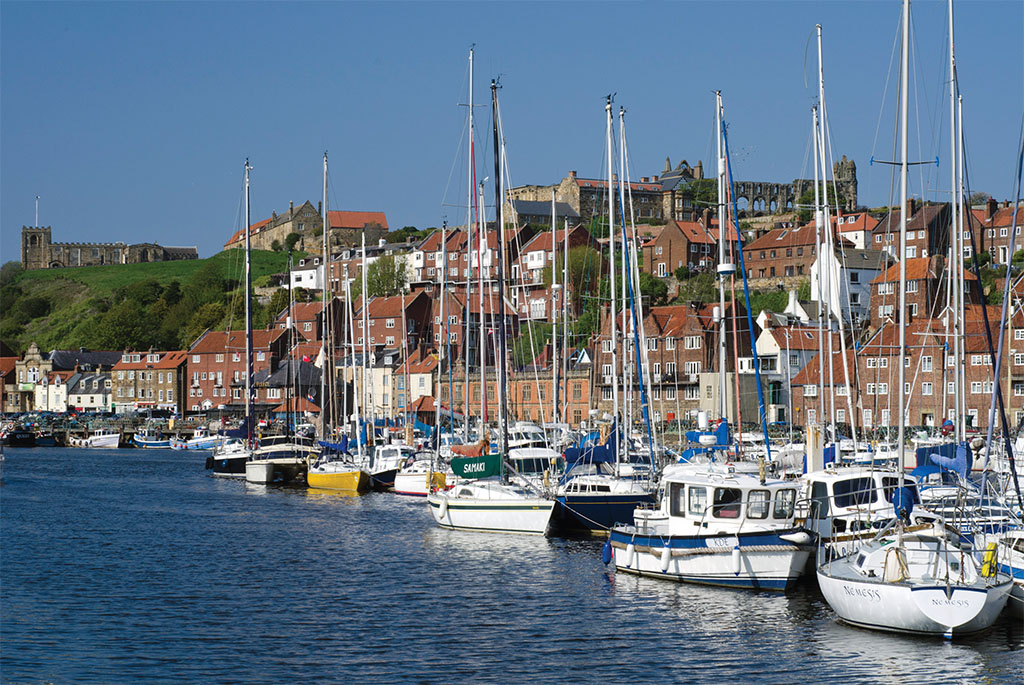
JIM HARGAN
AMODERN JET WORKSHOP is much smaller than what the Victorians used, what with modern tools. Hal Redvers-Jones, Whitby’s leading jet artisan, is standing in front of his own work area, so compact that it barely seems able to hold him. He should know. His tiny shop-gallery-museum, the Whitby Jet Heritage Museum, contains an 1867 workshop that was discovered walled into an abandoned attic in one of this Yorkshire fishing town’s many tightly packed cottages. He displays it intact, under an undisturbed patina of dust, a considerable amount of machinery and room for carving, polishing and mounting this fine local gemstone of the purest black found in thin, unpredictable layers in the sea cliffs that flank Whitby’s wide harbor.
The Jet Heritage Centre sits 200 yards up cobbled, pedestrians-only Church Street, one of several such shopping districts on both sides of Whitby’s busy harbor. The port is jammed with stores, pubs and teashops; tiny cobbled passages called yards, often stepped and too narrow to walk three abreast, lead off to more shops and cottages. Beyond the Jet Centre, Church Street continues to broad cliff-views of the harbor mouth. But just behind the center, a paved flight of nearly 200 steps lead up the first break in the cliff to the town’s church and ruined abbey.
Whitby Abbey, a stunning 13th-century Gothic monastery, dominates the town from atop its grassy headland. Its unroofed remains, although scant, are impressive. While the abbey’s nave has been reduced to a few column bases and its outbuildings are nowhere in sight, the presbytery, where its high alter once stood, remains at full height, golden stone and pointed arches contrasting with the closely-mowed grass. The Whitby ruins were more extensive into quite recent times; its massive central tower collapsed in 1830, and a German U-boat bombardment finished off its nave and main entrance in 1914. Whitby’s most prominent landmark, the abbey is visible from virtually all directions from several miles outside town.
[caption id="ProwlingthecobblestonesofWhitby_img1" align="aligncenter" width="1024"]
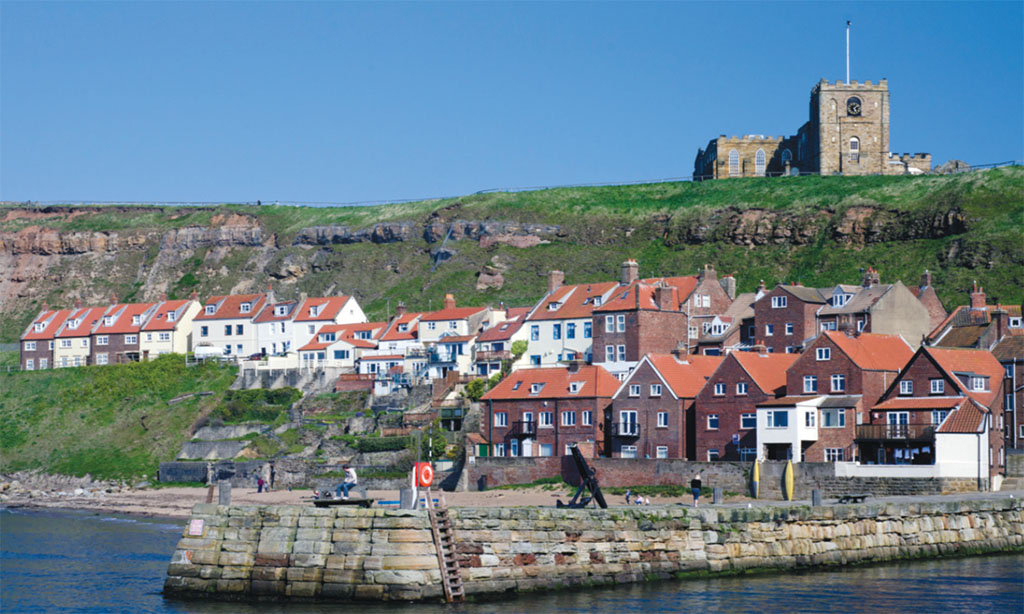
JIM HARGAN
[caption id="ProwlingthecobblestonesofWhitby_img2" align="aligncenter" width="1024"]
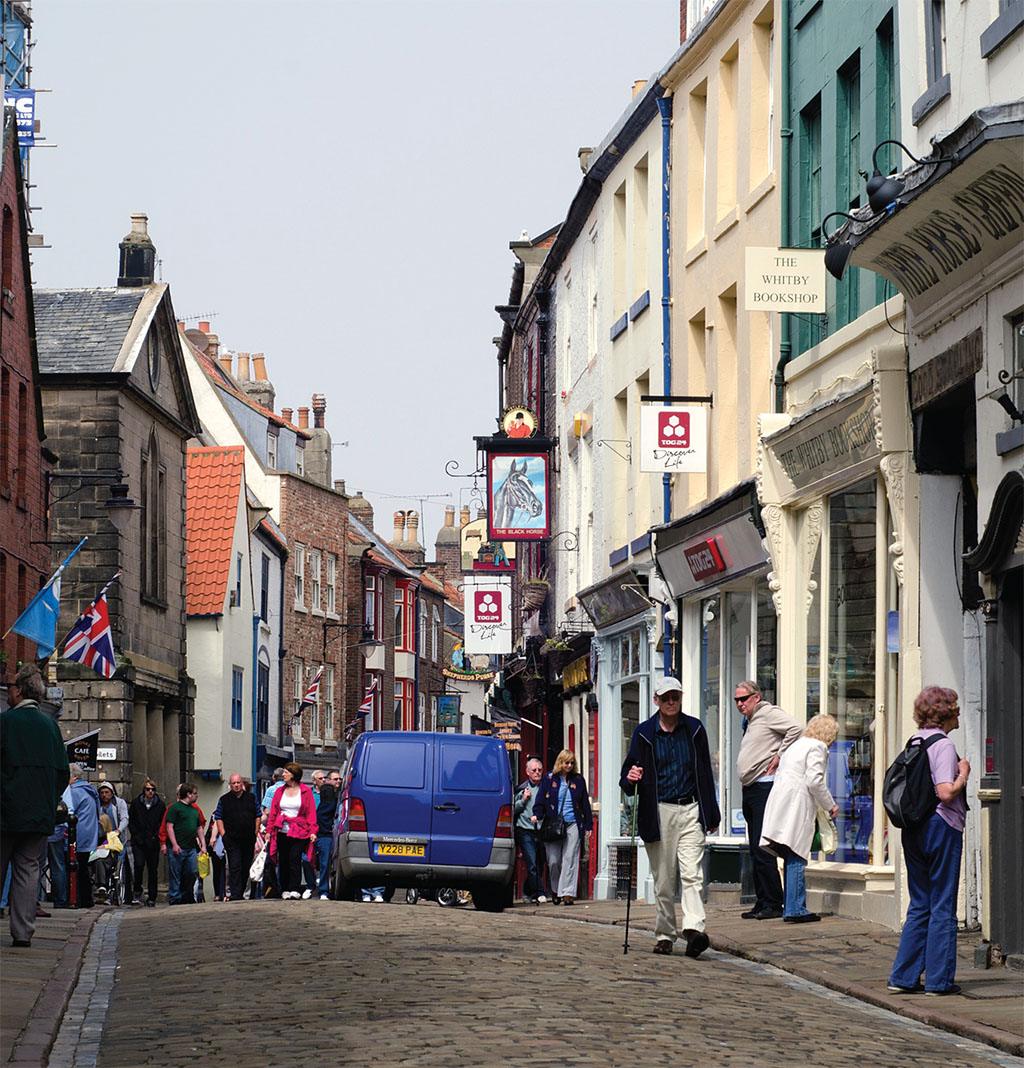
JIM HARGAN
[caption id="ProwlingthecobblestonesofWhitby_img3" align="aligncenter" width="1024"]

JIM HARGAN
The abbey you see today is not the first on the site, or even the second. Its immediate predecessor was built right after the Conquest, and can be spotted (by the sharp-eyed) in the occasional bit of roundness characteristic of the Norman period. The original, founded in the mid-7th century by St. Hilda, has a special place in history. At that time, Northumberland, Britain’s most important English kingdom, and the location of Whitby, was split between Celtic Christianity (brought by Irish monks from the north) and Roman Christianity (courtesy of Roman missionaries, who had entered from the south). It was here in 664 that Northumberland’s king sat in judgment as the leaders of each of the two traditions made their case, Colman of Lindesfarne for the Irish and St. Wilfred for the Romans. The king chose the Roman tradition, and ultimately all the British kingdoms followed Northumbria’s lead. So, it’s a pity that no actual buildings or artifacts survive from it, all were destroyed by Vikings and a 200-year abandonment. The specific site is unknown, and may well have fallen into the sea as the cliffs collapsed over the centuries.
The town you see today dates from those Vikings; the Northumbrian settlement clung to the abbey, gaining a false sense of safety from its cliff-ringed headland. The Viking settlers of the late 9th century moved down the cliff to build tightly around the sheltered, deep-water harborage cut into the cliffs by the River Esk. This set the pattern still seen today, of narrow, stone-cobbled lanes crowded chock-a-block with two- and three-story cottages, with even narrower yards leading off at right angles. These areas are surprisingly extensive—not just the 200 yards and 199 steps of Church Street on the abbey side of the harbor, but double that length along Pier Street on the west side, with comparable lengths of walkers-only cobblestones on Sandgate, Baxtergate, Flowergate and Cliff Street. It’s quite a maze, and can reduce the hardiest shopper into a state of happy exhaustion. Thank goodness for the plentiful pubs.
Awalk down one a particularly short and obscure cobbled lane, Grape Street, leads to Whitby’s other major historic site, the Captain Cook Memorial Museum. Here a modest front conceals a side-facing merchant’s house of the late 17th century, the place where the noted explorer and circumnavigator spent his apprenticeship and learned to sail. Cook, a farm lad, had originally been apprenticed to a grocer in the small harbor town of Straithes nine miles north of Whitby. Here he discovered that land-based life was not for him, and arranged to apprentice with a Whitby coal merchant.
Although nearly 20 and far too old to go to sea, he nevertheless applied himself to learning the trade of a sea captain and succeeded, first captaining merchant ships, then transferring to the Royal Navy for the Seven Years War, where he earned a reputation as a navigator and cartographer. Most important, however, was his long experience with coal transports, for that is what the Royal Navy chose for an explorer’s ship meant to map the Pacific and circumnavigate the globe. Captain Cook died in 1779 at age 50 during his third such journey, in a violent dispute with Hawaiians (who nevertheless gave him a chief’s funeral and returned his bones to his crew).
Nothing says “sea town” quite so much as this lovely little museum. It maintains the look it had when Cook visited it in his later years, for he maintained a friendship with his old master. It is an elegant, but unpretentious home of a prosperous merchant, featuring the distinguished proportions and decor of a Georgian town house; the only hint of its purpose is how it resolutely faces the harbor with its back to the town. The museum shows that it would have looked quite different in Cook’s boyhood; the elegant courtyard you see today was once a slip for off-loading merchant ships directly into the house, which contained (at that time) ample warehouse space. Other exhibits deal with Cook’s explorations, including a fine model of his coal-bark turned explorer, and all the men and equipment (to scale) packed into its cavernous hold.
An old sea town deserves a fine view from a sea cliff. Whitby’s West Cliff, signposted off the A174, has sweeping views from more than a half-mile of park-topped cliffs, 130 feet above the sea and harbor. The cliffs here are steeply pitched rather than vertical, grass-covered, with footpaths leading down. At the base is a half-mile of sand beach, lined by a paved promenade and brightly colored huts. Uphill, Georgian townhouses cluster around a circular park, reflecting those aristocratic neighborhoods in far-away Bath. At its far eastern end, the old town terraces up the gorge-side, and stepped sidewalks and a lane drop plunge down into the warren of cobbled streets. And across the harbor, the fine old abbey guards its charge.
[caption id="ProwlingthecobblestonesofWhitby_img4" align="aligncenter" width="1024"]
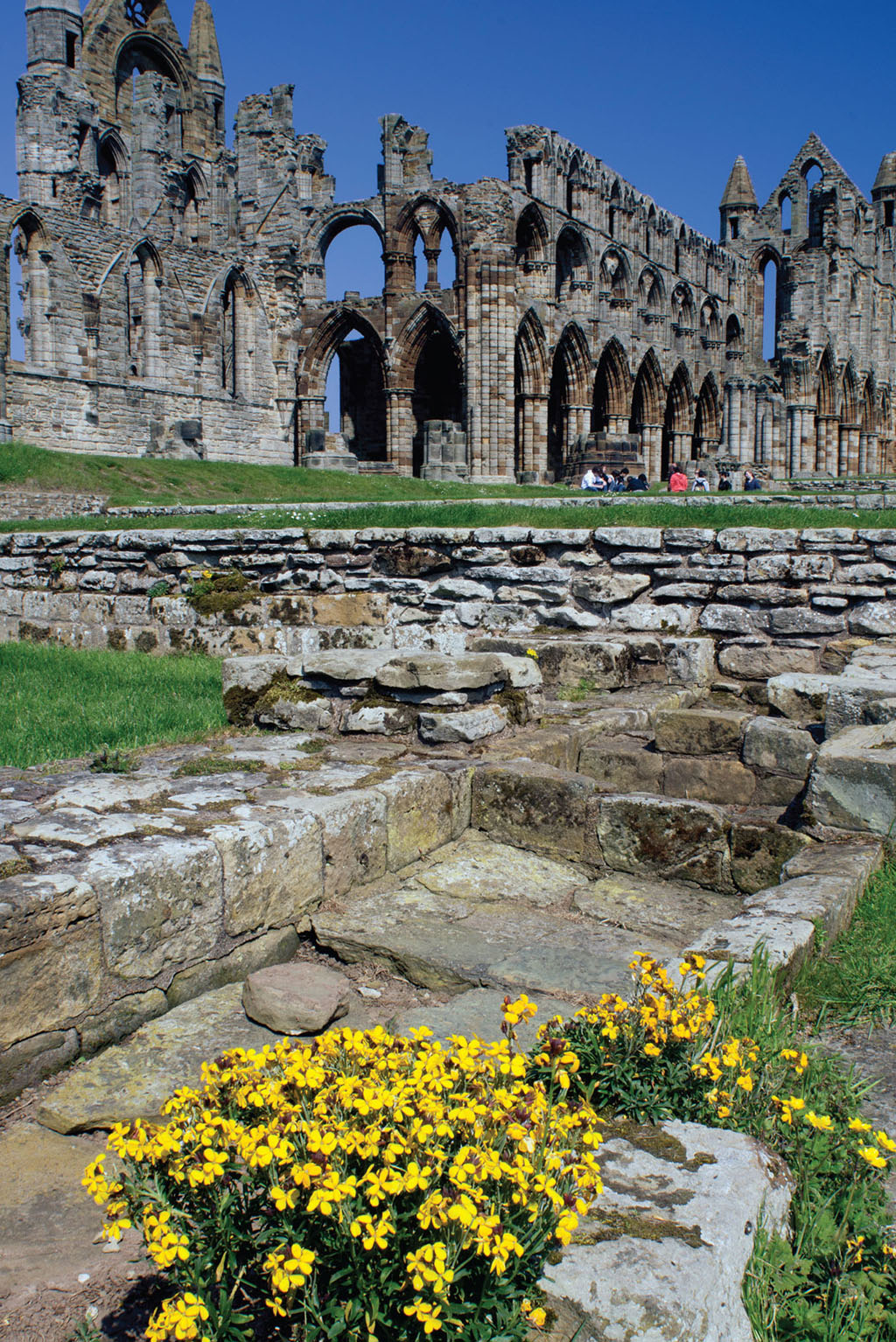
JIM HARGAN
[caption id="ProwlingthecobblestonesofWhitby_img5" align="aligncenter" width="677"]
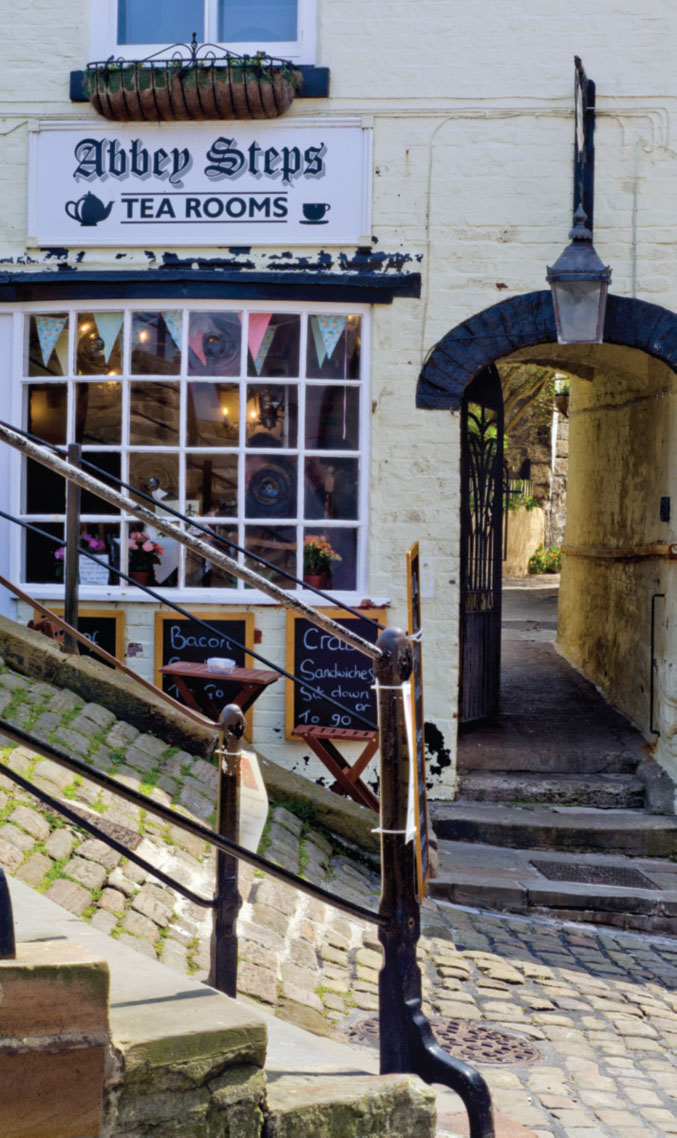
JIM HARGAN
[caption id="ProwlingthecobblestonesofWhitby_img6" align="aligncenter" width="633"]

JIM HARGAN





Comments